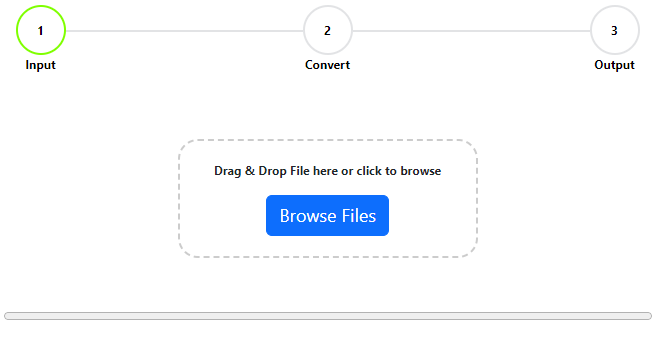GNSS, GPS, and SBAS: what are they?
Global Navigation Satellite Systems (GNSS) are satellite-based systems that provide positioning, navigation, and timing (PNT) information anywhere on Earth. GPS, GLONASS, BeiDou, and Galileo are examples of GNSS. Each system operates using a network of satellites that transmit signals to receivers on the ground.
Here’s a breakdown of the differences between GNSS, GPS, and SBAS:
- GNSS (Global Navigation Satellite System): GNSS is a generic term that encompasses all satellite-based navigation systems around the world. It includes the four major global systems – GPS, GLONASS, BeiDou, and Galileo – as well as regional systems like the Indian Regional Navigation Satellite System (IRNSS) and the Japanese Quasi-Zenith Satellite System (QZSS). GNSS systems are used in a variety of applications such as navigation, agriculture, surveying, disaster management, and many others.
- GPS (Global Positioning System): GPS is the United States’ GNSS system, developed and operated by the U.S. Department of Defense. It consists of 24 to 32 satellites in Medium Earth Orbit (MEO) and a global network of ground control stations. GPS provides accurate PNT information to civilian and military users around the world. It has become a standard feature in many consumer devices, such as smartphones, car navigation systems, and wearable devices.
- SBAS (Satellite-Based Augmentation System): SBAS is a supplementary system designed to improve the performance and accuracy of GNSS signals, primarily for aviation applications. SBAS uses ground stations to monitor GNSS signals and generate correction data, which is then transmitted via geostationary satellites to GNSS receivers. The corrections improve the accuracy, integrity, and availability of GNSS signals, allowing for more precise and reliable navigation.
| Feature | GNSS (Global Navigation Satellite System) | GPS (Global Positioning System) | SBAS (Satellite-Based Augmentation System) |
|---|---|---|---|
| Definition | A generic term for global and regional satellite-based navigation systems. | The U.S. satellite navigation system developed and operated by the Department of Defense. | A supplementary system that enhances the performance and accuracy of GNSS signals. |
| Examples | GPS (U.S.), GLONASS (Russia), BeiDou (China), Galileo (Europe), IRNSS (India), QZSS (Japan) | N/A (GPS itself is a GNSS) | WAAS (U.S.), EGNOS (Europe), MSAS (Japan), GAGAN (India) |
| Number of Satellites | Varies by system: typically from 24 to more than 30 satellites | 24 to 32 satellites in MEO | Uses geostationary satellites to relay correction information (number of satellites varies by system) |
| Primary Use | Positioning, navigation, and timing (PNT) information for various applications, including navigation, agriculture, surveying, and disaster management. | PNT information for civilian and military users around the world. | Primarily used to improve GNSS accuracy, integrity, and availability for aviation applications. |
| Coverage | Global or regional, depending on the system | Global coverage | Regional coverage; usually serves a specific continent or large geographic area |
| Accuracy | Varies by system, but typically between 5 and 15 meters | 4.9 meters for civilian users, better for military users | Improves GNSS accuracy to around 1-2 meters in certain cases |
| Infrastructure | A network of satellites and ground control stations specific to each system | 24 to 32 MEO satellites and global network of ground control stations | Ground monitoring stations, processing centers, and geostationary satellites to transmit correction data |
Examples of SBAS systems include the U.S. Wide Area Augmentation System (WAAS), the European Geostationary Navigation Overlay Service (EGNOS), the Japanese Multifunctional Satellite Augmentation System (MSAS), and the Indian GPS Aided Geo Augmented Navigation (GAGAN).
In summary, GNSS is a broad term that includes all satellite-based navigation systems, GPS is the U.S. satellite navigation system, and SBAS are supplementary systems designed to enhance the accuracy and reliability of GNSS signals.
A great introduction to GNSS and SBAS
How do these systems work with GNSS receivers like the one on your phone?
GNSS receivers are electronic devices that pick up signals from GNSS satellites to determine position, navigation, and timing (PNT) information. They play a crucial role in the interaction between the GNSS infrastructure and users’ applications. Here is a general overview of how GNSS receivers work with the various satellite systems:
- Satellite Signal Reception: GNSS satellites transmit signals at specific frequencies, carrying information about the satellite’s location, time, and other parameters. GNSS receivers have antennas designed to capture these signals from multiple satellites in view simultaneously.
- Signal Decoding and Processing: After receiving the signals, the GNSS receiver processes and decodes them to extract the necessary data, including the pseudo range (the estimated distance from the receiver to the satellite) and satellite position.
- Position Calculation: To determine the receiver’s position, at least four satellites are needed. The receiver uses a process called trilateration, which involves solving simultaneous equations based on the known positions of the satellites and the measured pseudo range. When the receiver calculates its position in three dimensions (latitude, longitude, and altitude), it also accounts for factors like signal delay due to the ionosphere and troposphere.
- Timing Information: GNSS satellites carry highly accurate atomic clocks, and the time information is embedded in the transmitted signals. The GNSS receiver uses the time data from multiple satellites to estimate its internal clock’s offset and synchronize with the GNSS time, allowing the receiver to provide precise timing information.
- Navigation and Other Applications: Once the GNSS receiver has calculated its position and timing information, it can be used for various applications, such as navigation, mapping, surveying, and asset tracking. The receiver’s output is often integrated with other sensors and systems, like accelerometers, gyroscopes, or map databases, to enhance its functionality and provide more comprehensive solutions for specific use cases.
- Multi-GNSS Receivers: Modern GNSS receivers are often designed to work with multiple GNSS systems (e.g., GPS, GLONASS, BeiDou, and Galileo) to improve performance, accuracy, and reliability. By tracking signals from different satellite systems, multi-GNSS receivers can benefit from an increased number of visible satellites and a more robust position solution, especially in challenging environments like urban areas or locations with obstructed views of the sky.
Few examples of the numerous applications of GNSS technology
The purpose of GNSS (Global Navigation Satellite Systems) is to provide positioning, navigation, and timing (PNT) information to users anywhere on Earth, using signals transmitted by satellites.
- Navigation: GNSS is used in personal, vehicular, and marine navigation systems, enabling users to determine their location, track movements, and plan routes. This has revolutionized the way people travel and navigate, making it easier to reach destinations, avoid traffic, and ensure safe passage in various transportation modes.
- Surveying and Mapping: GNSS technology allows for highly accurate land surveying and mapping applications, including cadastral surveying, topographic mapping, and construction site layout. GNSS-enabled equipment provides real-time positioning data that is essential for the development of infrastructure, land management, and urban planning.
- Agriculture: GNSS-based precision agriculture systems enable farmers to optimize crop management by providing accurate location data for activities such as planting, fertilizing, and harvesting. This technology helps farmers increase crop yields, reduce costs, and minimize environmental impacts.
- Emergency Services: GNSS is critical in emergency services and search-and-rescue operations. It allows emergency responders to accurately locate and reach people in distress, and it enables dispatchers to coordinate resources more effectively.
- Timing: GNSS satellites carry highly accurate atomic clocks that transmit time signals, which are essential for synchronizing various applications, such as telecommunications networks, financial systems, and power grids. Accurate timing helps ensure the smooth operation and coordination of critical infrastructure.
- Geoscience: GNSS technology is used to monitor natural phenomena such as earthquakes, volcanic activity, and sea level changes. By providing continuous, precise location data, GNSS helps scientists study Earth’s processes, leading to a better understanding of geophysical events and improved hazard assessment.
- Aviation, Maritime, and Rail Transport: GNSS enables safer and more efficient operations in various transport sectors. For example, it is used for aircraft navigation, docking assistance in maritime transport, and train control systems in railways.
- Asset tracking: GNSS is used to track the movement and location of assets, such as vehicles, containers, and livestock, providing valuable information for inventory management, supply chain optimization, and theft prevention.
- Weather forecasting: GNSS signals can be used to collect atmospheric data, which helps improve weather forecasting models and supports climate research.





